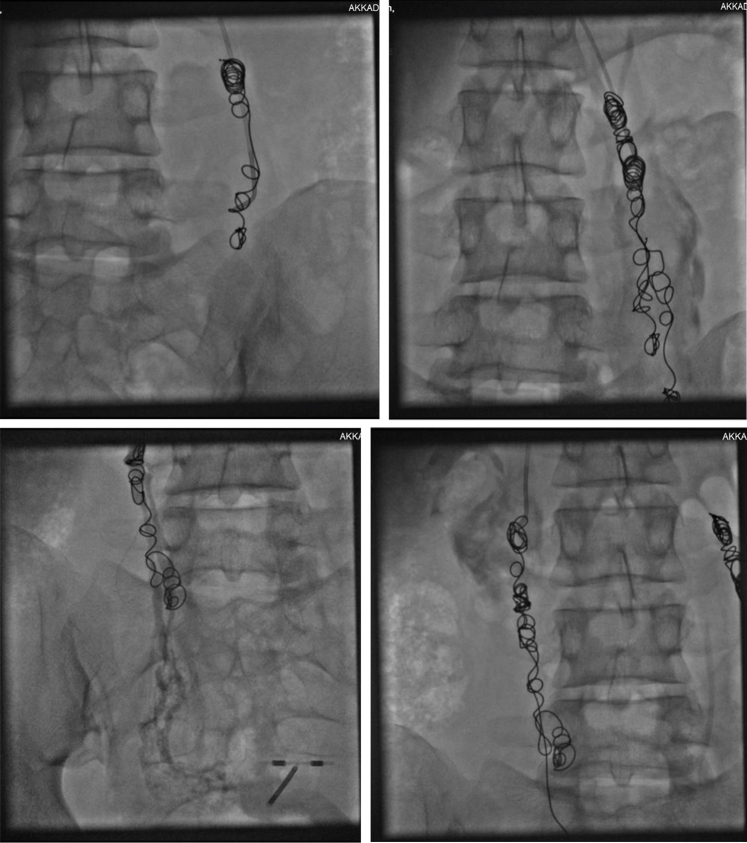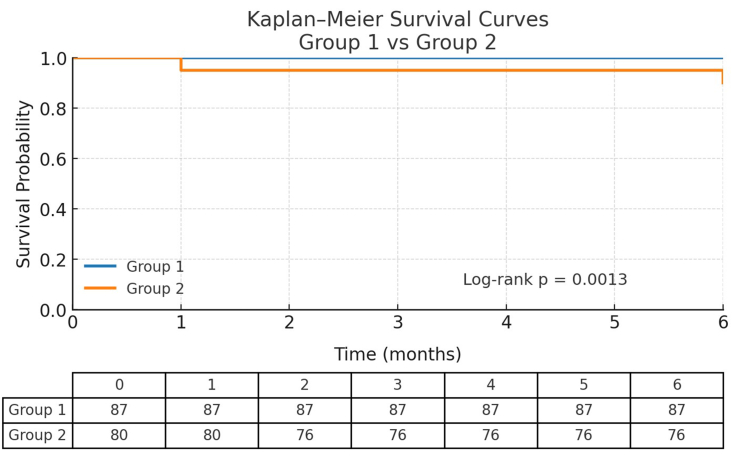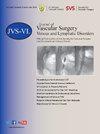Coil occlusion combined with sclerotherapy versus N-butyl-2-cyanoacrylate embolization in patients with pelvic venous disorders: A single-center retrospective study
IF 2.8
2区 医学
Q2 PERIPHERAL VASCULAR DISEASE
Journal of vascular surgery. Venous and lymphatic disorders
Pub Date : 2025-03-28
DOI:10.1016/j.jvsv.2025.102241
引用次数: 0
Abstract
Background
Pelvic venous disorder (PeVD) is increasingly diagnosed with different modalities of treatment.
Methods
This is a retrospective study in which we compared using metallic coil combined with sclerosant foam and N-butyl-2-cyanoacrylate in female patients with PeVD in terms of clinical and technical success as well as safety. Adult patients with symptoms suggestive of primary PeVD and confirmed with Doppler ultrasound examination and/or venography were eligible for the study. Secondary PeVD and lost follow-up were excluded.
Results
This study included 167 patients who were treated with coil and sclerotherapy (n = 87; group I) or N-butyl-2-cyanoacrylate (n = 80; group II) embolization. Immediate postoperative veins’ closure was achieved in all patients in the two groups. At the 6-month follow-up, there was a statistically significantly higher occlusion rate in group I (100% compared with 93.8% in group II, P = .018) with five new cases of recanalization. The 6-month visual analog scale score was lower in group I (median of 1 and mean of 1.14 ± 0.904) than group II (median of 2 and mean of 1.7 ± 1.32), with a statistically significant difference (P = .005).
Conclusions
The study emphasizes the potential advantages of the sclerosant foam and metallic coil combination in achieving favorable outcomes for patients with PeVD.


盆腔静脉疾病(PeVD)患者的线圈闭塞联合硬化疗法与 N-butyl-2 cyanoacrylate(NBCA)栓塞疗法:单中心回顾性研究。
背景:盆腔静脉疾病(PeVD)越来越多地被诊断为不同的治疗方式。患者和方法:这是一项回顾性研究,我们比较了金属线圈联合硬化泡沫n -丁基-2氰基丙烯酸酯(NBCA)治疗女性PeVD的临床和技术成功以及安全性。有提示原发性PEVD症状并经多普勒超声和/或静脉造影证实的成年患者符合研究条件。排除继发性PeVD和丢失的随访。结果:本研究纳入167例接受线圈和硬化治疗的患者(n = 87;第一组)或NBCA (n = 80;II组)栓塞。两组患者术后静脉均立即闭合。在6个月的随访中,I组的闭塞率(100%)明显高于II组的93.8% (p = 0.018),有5例新发再通。组患者6个月VAS评分(中位数为1,平均值为1.14±0.904)低于组患者(中位数为2,平均值为1.7±1.32),差异有统计学意义(p = 0.005)。结论:该研究强调了硬化泡沫和金属线圈组合在PeVD患者中获得良好结果的潜在优势。
本文章由计算机程序翻译,如有差异,请以英文原文为准。
求助全文
约1分钟内获得全文
求助全文
来源期刊

Journal of vascular surgery. Venous and lymphatic disorders
SURGERYPERIPHERAL VASCULAR DISEASE&n-PERIPHERAL VASCULAR DISEASE
CiteScore
6.30
自引率
18.80%
发文量
328
审稿时长
71 days
期刊介绍:
Journal of Vascular Surgery: Venous and Lymphatic Disorders is one of a series of specialist journals launched by the Journal of Vascular Surgery. It aims to be the premier international Journal of medical, endovascular and surgical management of venous and lymphatic disorders. It publishes high quality clinical, research, case reports, techniques, and practice manuscripts related to all aspects of venous and lymphatic disorders, including malformations and wound care, with an emphasis on the practicing clinician. The journal seeks to provide novel and timely information to vascular surgeons, interventionalists, phlebologists, wound care specialists, and allied health professionals who treat patients presenting with vascular and lymphatic disorders. As the official publication of The Society for Vascular Surgery and the American Venous Forum, the Journal will publish, after peer review, selected papers presented at the annual meeting of these organizations and affiliated vascular societies, as well as original articles from members and non-members.
 求助内容:
求助内容: 应助结果提醒方式:
应助结果提醒方式:


